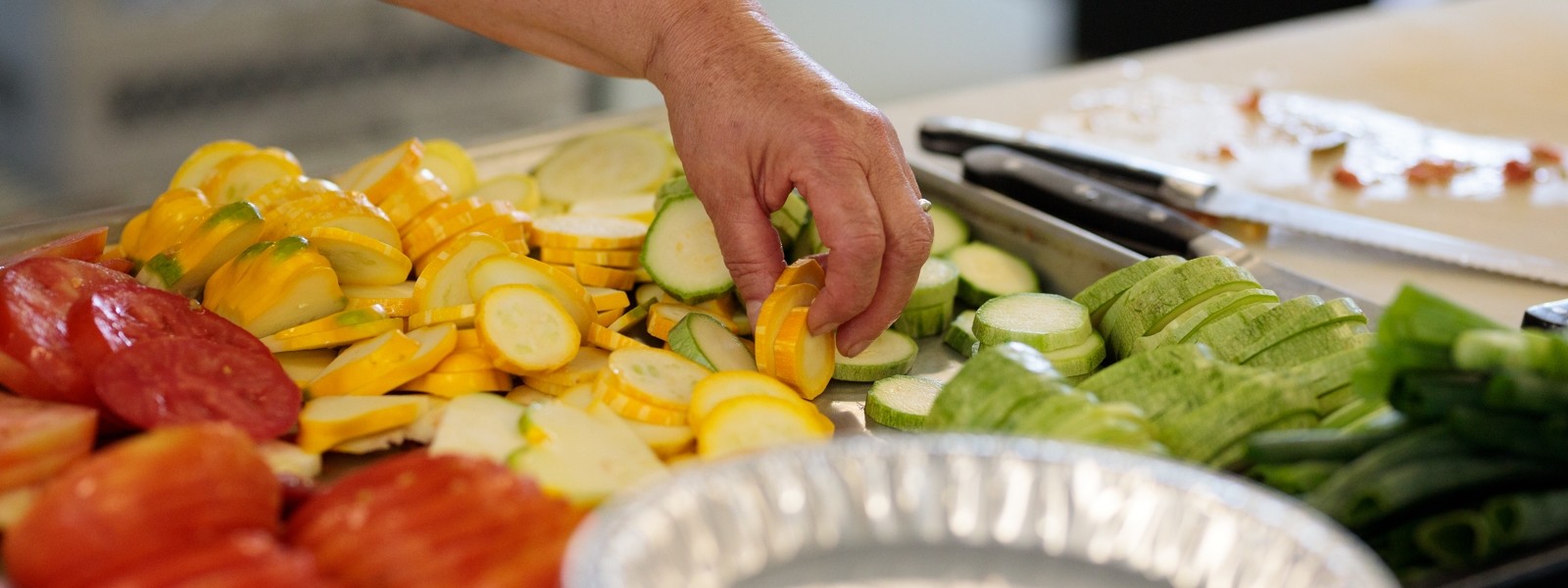How to Make Sauerkraut
Lacto-fermentation, a natural preservation method, enhances flavor and boosts nutritional benefits like improved digestion and nutrient absorption.


Prepare Your Vegetables & Flavor Additions
- Cut cabbage (any cabbage!) into thin strips, or slice it.
- Slice any other vegetables you’d like to include! We add any combination of: onions, carrots, scallions, kohlrabi, garlic, daikon radish (or other radish), or fennel. We also like to add spices, such as cardamom or turmeric, to taste.
Calculate How Much Salt to Add & Incorporate
- With all ingredients in a large bowl or tub, including any spices, measure the weight. Subtract the weight of the container and calculate 2% of the total weight of ingredients. This is how much salt you’ll add.
- Massage the vegetables to incorporate the salt, for about 5-10 minutes, until juices are rendered. How will you know when that is? The color of the mixture changes, the overall mass begins to decrease, and you’ll see liquid in the bottom of the bowl when you move the vegetables off to one side.
Let Rest & Repeat
- Let the mixture rest, uncovered at room temperature, for about 15 minutes.
- Massage again for 5-10 minutes.
Add to Fermentation Vessel & Let Ferment
For a fermentation vessel, you can use any ceramic, glass, or food grade plastic container. You may want to keep one dedicated container for fermenting; it can stain or leave behind an odor from the fermentation process.
- Add the kraut mixture to your container, leaving at least 2 inches of headspace for a small jar, or 6+ inches for a 5-gallon bucket. This allows enough room for the mixture to bubble; if you don’t leave the recommended amount of space, the mixture will need to be “burped” daily. Note that if using a 5-gallon bucket or larger quantity, add the kraut mixture in small quantities, packing the container between each addition. The idea is to have as little air as possible in the kraut mixture.
- Put a layer of plastic wrap on top of the kraut and add a weight—like a container full of water— on top to hold your kraut in its liquid as it ferments. (The plastic wrap will prevent the weight from contaminating the kraut.) Then, cover your fermentation vessel.
- Let it sit at room temperature to ferment at 55-70 degrees Fahrenheit. Taste it every day or every other day, until it reaches your desired flavor.
Refrigerate
- When the kraut tastes “right” (to you), transfer it to the refrigerator to stop the fermentation.
Enjoy!
On its own, or as the perfect accompaniment to sausages or salted meats, soups and stews, sandwiches, and more!

